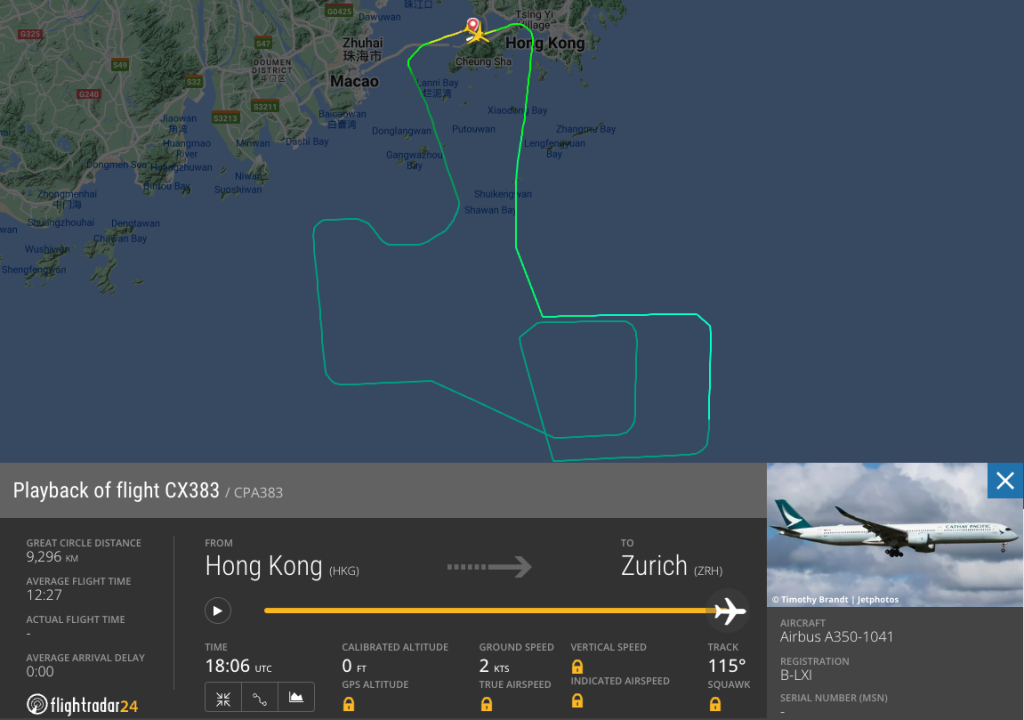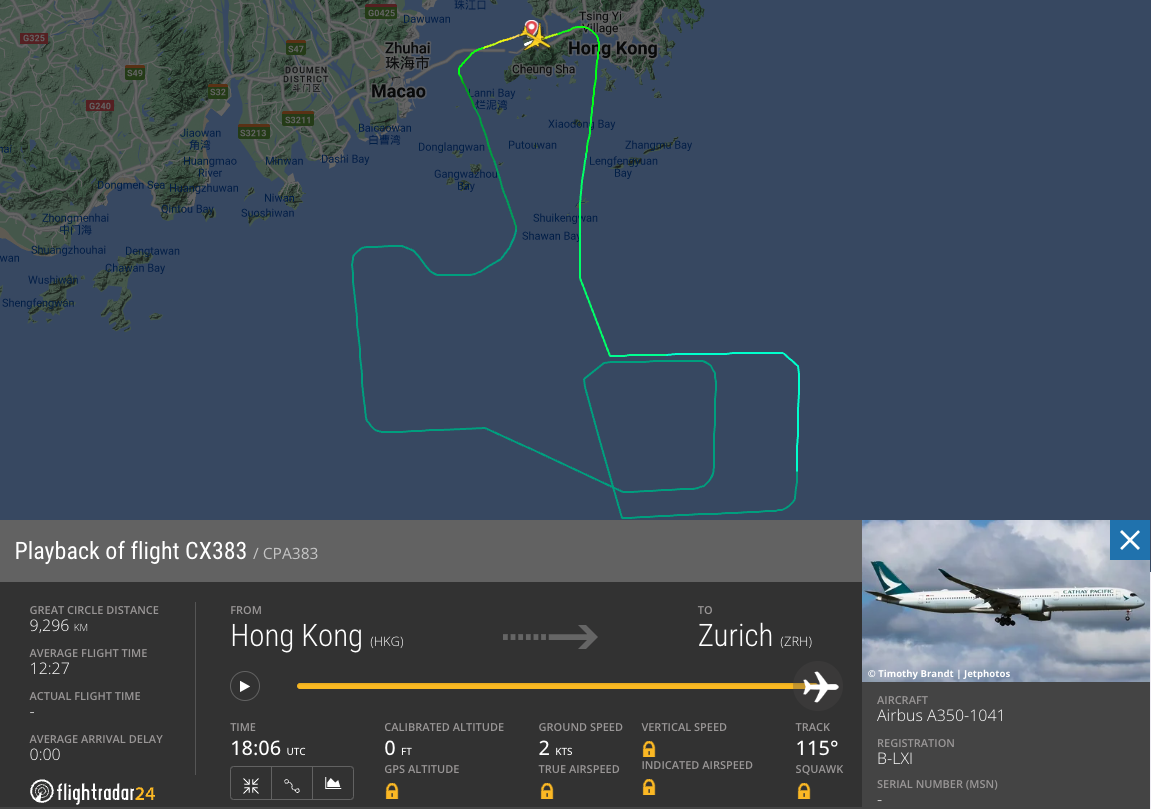Cathay Pacific flight CX383 from Hong Kong to Zurich suffered an engine failure shortly after take-off on the 2nd of September. It stopped its climb at 9’000 feet and flew two loops over the sea before being vectored back to the airport, where it did land without problem. The total flight time was 1h15 and another aircraft was dispatched rapidly after and it flew to Zurich uneventfully.

The engine failure resulted from an engine fire, which was rapidly detected and extinguished.
The aircraft is an Airbus A350-1000 registered as B-LXI and it is equipped with Rolls-Royce Trent XWB-97 engines. As always in such cases, the investigation started immediately and some factors have already been identified by the local authorities and communicated to the European Union Aviation Safety Agency – EASA.
The final root cause is not identified yet but what the Agency knows so far is that: “Damage of a fuel manifold flexible tube was reported, leading to a controlled, temporary engine fire and heat damage to the exterior and interior of the engine nacelle (thrust reverser C-ducts). The occurrence resulted in a commanded in-flight shut down.“
The EASA has been informed because it is the so-called “State of Design airworthiness authority” for the A350 aircraft and for the Trent XWB engines. It is interesting to note that the engines are formally manufactured by Rolls-Royce plc but the holder of the design approval is ROLLS-ROYCE DEUTSCHLAND Ltd & Co KG – the German branch of the British engine manufacturer.
As a consequence, the EASA issued an emergency airworthiness directive, which mandates inspections, replacement is appropriate and results reporting.
In their communication, the EASA mentions an element which is one more demonstration of the great safety culture in aviation: “Following an inspection by Cathay Pacific of its A350 fleet, the airline reported similar problems on other aircraft.”
Given the seriousness of this incident, which is classified as “serious”, the mandated inspections but be performed within a timeframe of 3 to 30 days, depending on each engine maintenance history.
Cathay Pacific grounded their fleet of 48 Airbus A350 for inspection on Monday and other companies are impacted by the airworthiness directive as well. The Trent WXB-97 equips other aircraft types, which are equally affected.
The handling of this event by the airline, the aircraft manufacturer, the engines manufacturer and the oversight agencies highlights global collaboration and a high-level of transparency, with the airworthiness directive being made publicly available, with an explanation and details down to part numbers.
All aircraft and engines are subject to constant oversight and even if this case attracted media attention, numerous airworthiness directives and safety directives are published every year and this is a normal thing.
A quick look at the EASA Airworthiness Directives page and in the Agency’s AD database shows that 17 Emergency Airworthiness Directives have been published since the 1st of January 2024. Such transparent processes play a significant part in making aviation as safe as it is.

Leave a Reply